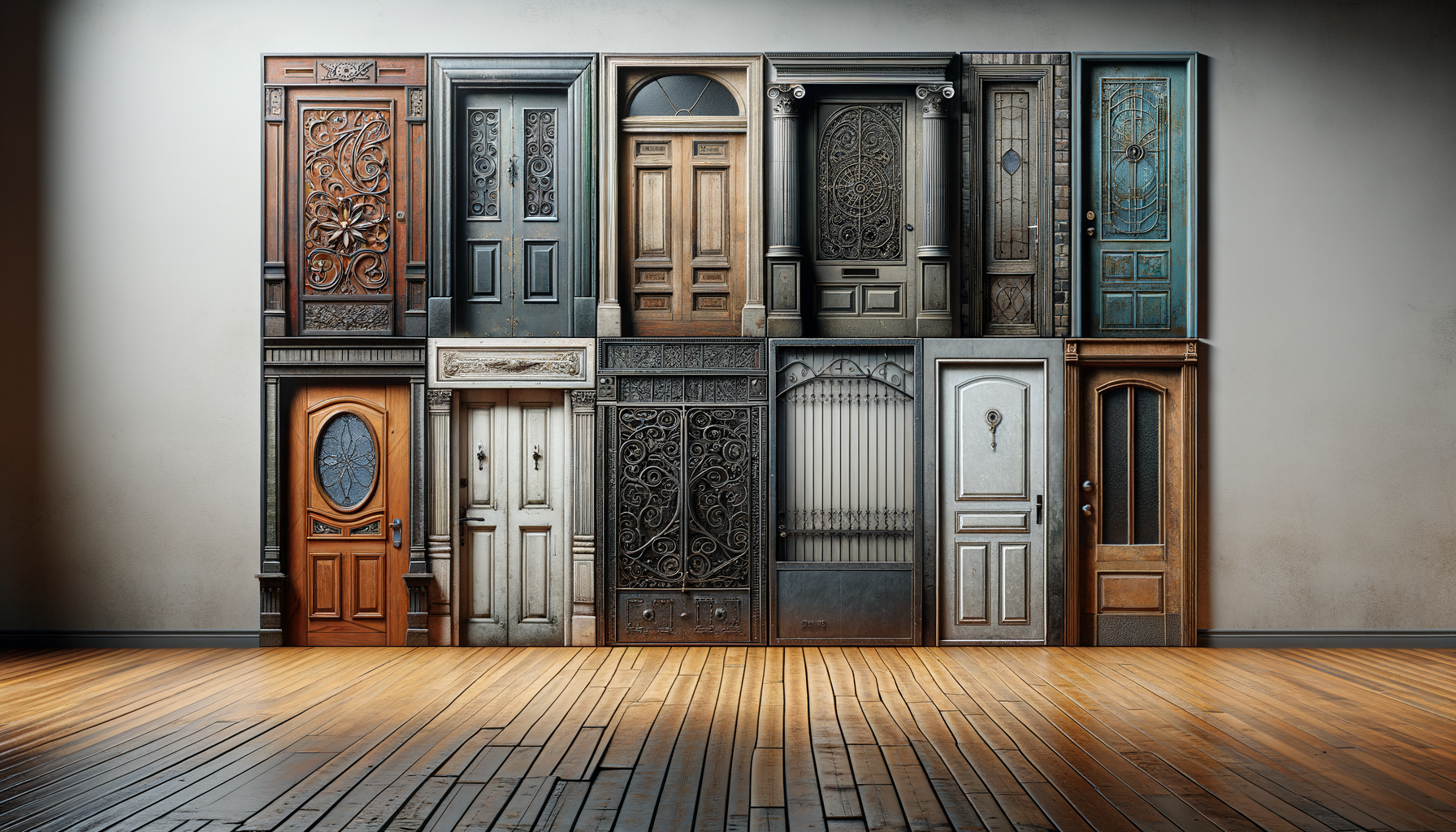The Historical Significance of Doors
Doors have been an integral part of human civilization for thousands of years, serving both functional and symbolic roles. Historically, doors have represented security, privacy, and status. In ancient Egypt, doors were often decorated with intricate carvings that depicted religious symbols and were believed to protect against evil spirits. Similarly, in medieval Europe, castles featured heavy wooden doors reinforced with iron to defend against invaders, showcasing the importance of doors in providing safety and security.
Beyond their protective functions, doors have also been used as a means of expressing wealth and power. In many cultures, the grandeur of a door’s design reflected the status of its owner. For instance, the ornate doors of the Forbidden City in China are a testament to the imperial power and artistic achievement of the Ming and Qing dynasties. These historical examples illustrate that doors are not merely utilitarian objects but are also imbued with cultural and artistic significance.
The Aesthetic Appeal of Modern Doors
In contemporary architecture, doors continue to play a crucial role in defining the aesthetic of a space. Modern design trends have embraced doors as a focal point that can dramatically enhance the visual appeal of a building. From sleek, minimalist designs that complement a modern interior to rustic, handcrafted wooden doors that add warmth and character, the variety of styles available today allows for endless creative possibilities.
Materials such as glass, metal, and composite materials are increasingly popular, offering not only durability but also a modern aesthetic. Glass doors, for example, can create a seamless transition between indoor and outdoor spaces, allowing natural light to flood in and create an open, airy atmosphere. Additionally, innovative designs like pivot doors and barn doors are gaining popularity for their unique functionality and stylish appearance.
Ultimately, the aesthetic appeal of a door can significantly influence the overall design of a space, making it an essential consideration in any architectural project.
The Practicality of Doors in Everyday Life
While doors are often appreciated for their aesthetic qualities, their practical functions are equally important. Doors provide security, privacy, and noise reduction, making them essential components of any building. In residential settings, doors help define spaces, offering a sense of separation and intimacy. For instance, bedroom doors provide privacy and a retreat from the hustle and bustle of daily life, while bathroom doors ensure personal space and comfort.
In commercial and public buildings, doors are critical for controlling access and ensuring safety. Fire-rated doors, for example, are designed to prevent the spread of fire and smoke, providing crucial time for occupants to evacuate safely. Additionally, automatic doors offer convenience and accessibility, particularly in high-traffic areas such as shopping centers and airports.
The practical benefits of doors are multifaceted, making them indispensable in both residential and commercial environments.
Innovations in Door Technology
As technology continues to advance, so too does the functionality of doors. Smart doors, equipped with electronic locks and integrated security systems, are becoming increasingly common. These doors can be controlled remotely via smartphone apps, offering enhanced security and convenience. Features such as biometric access, video doorbells, and motion sensors are transforming the way we interact with our doors, providing peace of mind and ease of use.
Moreover, advancements in materials and construction techniques have led to the development of energy-efficient doors. These doors are designed to minimize heat transfer, helping to maintain a comfortable indoor temperature and reduce energy costs. By incorporating features like insulated cores and weatherstripping, energy-efficient doors contribute to sustainable building practices and environmental conservation.
Innovations in door technology are continually evolving, offering new possibilities for enhanced security, convenience, and sustainability.
Choosing the Right Door for Your Space
Selecting the right door for a particular space involves considering both aesthetic and practical factors. The style and material of a door should complement the overall design of the building, enhancing its visual appeal while fulfilling its functional requirements. For instance, a traditional wooden door may suit a classic home, while a sleek glass door might be more appropriate for a modern apartment.
Practical considerations include the door’s durability, security features, and energy efficiency. For exterior doors, weather resistance and insulation are crucial factors, while interior doors should offer privacy and soundproofing. Additionally, the choice of door hardware, such as handles and locks, can further enhance both the functionality and appearance of the door.
Ultimately, choosing the right door involves balancing aesthetic preferences with practical needs, ensuring that the door serves its intended purpose while contributing to the overall design of the space.








